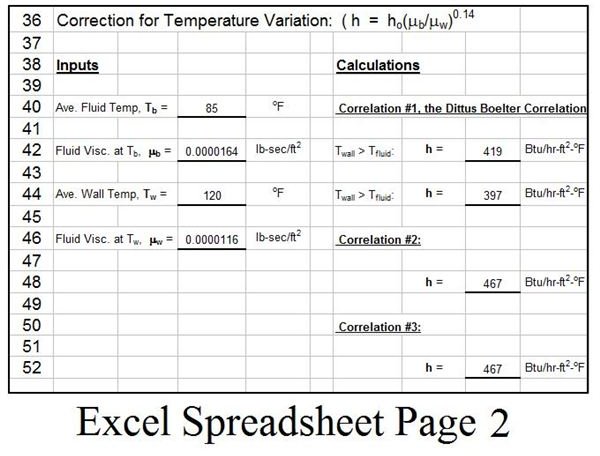The System Design Load program estimates design cooling and heating loads for commercial buildings to facilitate HVAC system design. System Design Load advances the art of HVAC load estimating by introducing the concept of systembased design. This is an excellent course for anyone who needs a general overview of the principles of heat transfer and heating and cooling load calculation. You will benefit from this course if you are: A recent engineering graduate working in the HVACR industry. Heating, ventilation, and air conditioning (HVAC) is the technology of indoor and vehicular environmental comfort. However, before taking up the heat load calculation, it is necessary to find fresh air requirements for each area in detail, as pressurization is an important consideration. International Airconditioning Heat Load Calculations can be very complex due to the numerous factors that may need to be considered, such as the technology being used, geographic location, building materials and orientation, number of occupants, quality of insulation and types of activities being undertaken etc. A manual J (aka load calculation) is the exercise of sizing your home so that the right (not oversize) size of heating and or cooling equipment can be installed. Used to be that contractors used rules of thumbs. The purpose of this database is to provide current information on service life and maintenance costs of typical HVAC equipment. Engineers depend on accurate owning and operating data to make decisions involving the life cycle and functionality of buildings. Cooling heating load calculations are normally made to size HVAC (heating, ventilating, and airconditioning) systems and their components. In principle, the loads are calculated to maintain the indoor design conditions. When we do a Manual J HVAC load calculation, we accurately enter all the relevant data, such as the home's orientation, insulation levels, window types, areas of all. Wrightsoft HVAC software is the complete solution for HVAC load calculations, system design and sales requirements. Maximum Heat Load Temperature Test This test is designed to place the AC system under a maximum heat loa system temperatures and pressures under the. Heating versus cooling load calculations: As the name implies, heating load calculations are carried out to estimate the heat loss from the building in winter so. The exact thermal load can be determined by using a full heat load analysis. Disclaimer Statement The recommended BTU loads were determined in good faith and. Latent heat formula for HVAC engineers where does Q 4, 790(CFM) come from? Mitchell Paulus 2, 527 views QwickLoad is an easy, fast and accurate computer software program for calculating heat loss gain for residential commercial buildings for sizing HVAC systems. hvac cooling load calculations and principles Sensible Heat Gain is the energy added to the space by conduction, convection andor radiation. Latent Heat Gain is the energy added to the space when moisture is added to the space by means of vapor The HVAC Quick Load module allows you to quickly perform ruleofthumb heating and cooling load calcs based upon just inputting the building type, square area, and# of people. Please see the description located under the standalone HVAC Quick Load app for more details about it. Sample Heat Load Calculation for General Office Meeting Room Heat Load Calculation Cooling Capacity (kW), S upply Air V olume (CMH), Supply Fre sh Air Volume (CMH), Chilled Water Flow Rate (ls) if CHW System i s used. When we calculate the heat load. Then, HVAC load calculations are performed, equipment is selected, and the building mechanical drawings are generated. That will include, but is not limited to, equipment and ductwork layout, schedules, details, and specifications to guide the contractor(s) in the performance of their work. 0 provides heat gain and heat loss calculations for up to 10 zones. 0 provides heat gain and heat loss calculations for up to 500 zones. Zones and plenums can be added or deleted with one button click. About LoadCalc: A load calculation program based on Manual J, designed to be quick and easy to use. It calculates the amount of heating and cooling BTU's needed for the whole house. Heating load definition is the quantity of heat per unit time that must be supplied to maintain the temperature in a building or portion of a building at a given level. the quantity of heat per unit time that must be supplied to maintain the temperature in a building or portion of a building at a given level Determining heat load calculations is a necessary but often overlooked method to ensure efficient air management. If you are installing a new HVAC system, proper design and installation is essential for efficiency and functioning. Chvac Commercial HVAC Loads Commercial Load Calculations Done Right. Chvac has been an industry leader in commercial load calculation software since 1979. Try Elite Software's flagship program today and see why so many professional engineers are choosing Chvac. HVAC Cooling Load Estimate Sheet. Coils, Direct Expansion, Chilled Water, And Heating. Documents Similar To Heat Load Calculation. HVAC Supply Airflow Calculation Sample. Accounting Software, Flat Rate Pricing, Free Heat Gain Calculators, Templates, Seminars, and Consulting for the HVAC (heating and air conditioning industry). Our goal is to make HVAC companies easier and more enjoyable to operate by offering products, software, free downloads, and advice. Cooling load is the rate at which sensible and latent heat must be removed from the space to maintain a constant space drybulb air temperature and humidity. Sensible heat into the space causes its air temperature to rise while latent heat is associated with the rise of the moisture content in the space. 3D CAD Views HeatCAD generates 3D views of your building that you draw in 2D. The new 3D views are a powerful aide for ensuring accurate heat load calculations, and are also very effective for communicating your design work. QwickLoad is an easy, fast and accurate computer software program for calculating heat loss gain for residential commercial buildings for sizing HVAC systems. Easy To Use Commercial Residential HVAC Load Calculation Program An HVAC Load Calculation is a mathematical process for measuring several aspects of a building in order to determine the best size, application and style of HVAC system. Calculates the design heating and cooling loads and associated psychrometrics for air conditioning plant in buildings. CAMEL is one of the leading air conditioning load estimation programs used in. Accurate load calculations have a direct impact on energy efficiency, occupant comfort, indoor air quality, and building durability. The load calculation is the first step of the iterative HVAC Manual J HVAC Whole House Load Calculation for Residential New Installation One System Included. Additional systems generate additional charges. Additional systems generate additional charges. Cannot be upgraded to a Room By Room calculation once the calculation has been performed. HEATING LOAD CALCULATION INSTRUCTIONS To accurately size a furnace, we must determine the heat loss of a structure. In most cases, we only need the whole house load, which is a simplified procedure from the detailed Manual J procedure. To determine I would like to hear anyones opinion on a good heat load calculatiion software. I am at a point where I could go into buisness for myself, but do not have the time to go back to school to learn man j d. I have 7 yrs in the buisness and mainly do change outs. I am a Firefighter and really just want to use hvac work as a supplemental income, however I want my work to be A PLUS, as I have. cooling load calculation due to changing solar heat gains at various times of the day. Put your presentation title or confidentiality info here. Design Considerations: Best Case East. HVAC RightSizing Part 1: Calculating Loads Author. Seminar presentation of HVAC cooling load calculation. Seminar presentation of HVAC cooling load calculation. System Heat Gains There may be others sources of heat gain within the HVAC system. One example is the heat generated by fans. When the supply fan, driven by an electric motor, is located in the conditioned airstream, it adds heat to. 12 Cooling Load Calculations 1. Contents Principle of cooling load Why cooling load heat gains are different Design conditions Understand CLTDCLF method An example System Heat Gain These are sometimes external to the air conditioned space HVAC equipment also contributes to heat gain Fan. The heat load calculations is very important part of the HVAC designer or HVAC consultant. Let us first try to understand what are heat load calculations? You know that we use the airconditioners to keep our room or offices cool when the surroundings or atmospheric temperature is high. Due to high atmospheric temperature lots of heat is generated inside the room. The EMS HVAC load calculator is the only HVAC software that guarantees your satisfaction or your money back. If you are not satisfied for any reason. Within 60 days of purchase, s imply send us an email saying, saying, Give me my money back for the load calculator. The design cooling load (or heat gain) is the amount of heat energy to be removed from a house by the HVAC equipment to maintain the house at indoor design temperature when worst case outdoor design temperature is being experienced. The sum of all these heat sources is know as the heat gain (or heat load) of the building, and is expressed either in BTU (British Thermal Units) or Kw (Kilowatts). For an air conditioner to cool a room or building its output must be greater than the heat gain. Yes, there will be years with heat waves and years with cold spells, but HVAC equipment sized according to the design loads and ACCA's Manual S equipment selection protocol should cover you for most of the extreme loads you experience. This HVAC load calculation software has been developed using sound engineering principles as prescribed by ACCA's Manuals J, D and S and ASHRAE's Handbook Book of Fundamentals. Complete your job quickly, efficiency and accurately with Emerson's line of tools and expert insights. Provides all of the sizing and load information needed to design HVAC systems and select air conditioning equipment. Uses the same load calculation method as HAP and System Design Loads. which applies the ASHRAEendorsed Heat Extraction Methodology to link system performance to building thermal loads. 7 Tips for Accurate HVAC Load Calculations. Looking to rightsize your HVAC systems? A building science expert offers advice for getting HVAC load calculations just right. thermal conductivity, and solar heat gain coefficient. The better a homes enclosure, the more the windows are going to affect the loads. Having seen what heat load calculations is, let us see the process of heat load calculations done by HVAC designer. The heat load calculations are a highly specialized, time consuming and complicated task of the HVAC designers. Cooling Load Latent and Sensible Heat Latent and sensible cooling loads to consider in design of HVAC systems Dehumidifiers Classification of dehumidifiers Electric Heating of a Mass Electric heating of an object or mass energy supply and temperature change Sensible heat load Sun light gain BTUH Sq Ft Factor BTUH 0 23 0 0 80 0 0 68 0 19. 6 W3 215 0 66 0 Glass SE 0 70 0 W3 Glass SW 0 81 0 Glass NW 0 74 0 Transmission heat gain BTUH type Sq Ft u Sunlit walls 150 0. 2 Ceiling type four.











